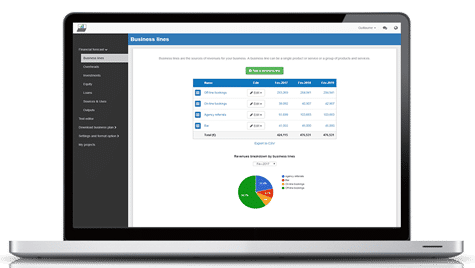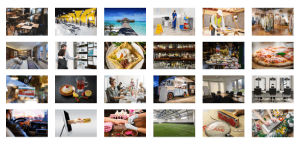How to create a financial forecast for a furniture flipping company?
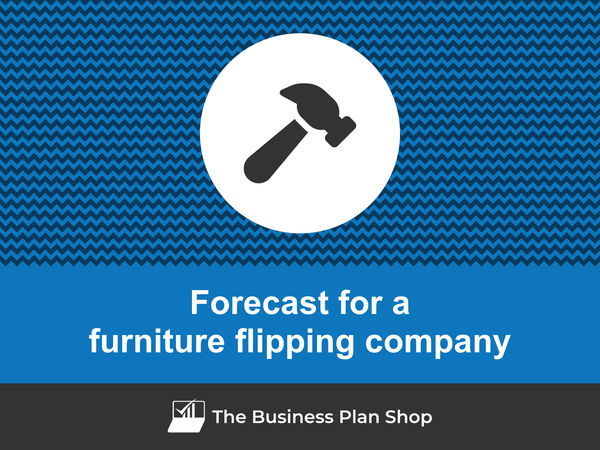
If you are serious about keeping visibility on your future cash flows, then you need to build and maintain a financial forecast for your furniture flipping company.
Putting together a furniture flipping company financial forecast may sound complex, but don’t worry, with the right tool, it’s easier than it looks, and The Business Plan Shop is here to guide you.
In this practical guide, we'll cover everything you need to know about building financial projections for your furniture flipping company.
We will start by looking at why they are key, what information is needed, what a forecast looks like once completed, and what solutions you can use to create yours.
Let's dive in!
Why create and maintain a financial forecast for a furniture flipping company?
Creating and maintaining an up-to-date financial forecast is the only way to steer the development of your furniture flipping company and ensure that it can be financially viable in the years to come.
A financial plan for a furniture flipping company enables you to look at your business in detail - from income to operating costs and investments - to evaluate its expected profitability and future cash flows.
This gives you the visibility needed to plan future investments and expansion with confidence.
And, when your trading environment gets tougher, having an up to date furniture flipping company forecast enables you to detect potential upcoming financing shortfalls in advance, enabling you to make adjustments or secure financing before you run out of cash.
It’s also important to remember that your furniture flipping company's financial forecast will be essential when looking for financing. You can be 100% certain that banks and investors will ask to see your numbers, so make sure they’re set out accurately and attractively.
Need a solid financial forecast?
The Business Plan Shop does the maths for you. Simply enter your revenues, costs and investments. Click save and our online tool builds a three-way forecast for you instantly.
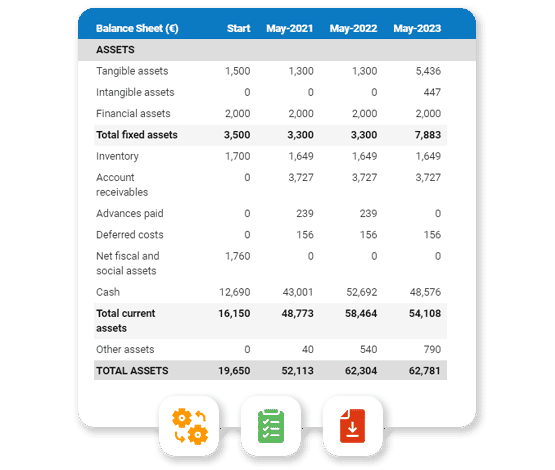
What information is used as input to build a furniture flipping company financial forecast?
A furniture flipping company's financial forecast is only as good as the inputs used to build it.
If you are creating (or updating) the forecast of an existing furniture flipping company, then you mostly need your accounting information, key historical operating non-financial data, and your team’s input on what to expect for the coming years.
If you are building financial projections for a furniture flipping company startup, you will need to have done your research and have a clear picture of your competitive environment and go-to-market strategy so that you can forecast sales accurately.
For a new venture, you will also need a precise list of the resources needed to keep the furniture flipping company running on a day-to-day basis and a list of the equipment and expenditures required to start the business (more on that later).
Let's now take a closer look at the elements that make up your furniture flipping company's financial forecast.
The sales forecast for a furniture flipping company
From experience, it is usually best to start creating your furniture flipping company financial forecast by your sales forecast.
To create an accurate sales forecast for your furniture flipping company, you will have to rely on the data collected in your market research, or if you're running an existing furniture flipping company, the historical data of the business, to estimate two key variables:
- The average price
- The number of monthly transactions
To get there, you will need to consider the following factors:
- Local Housing Market Trends: Fluctuations in the local housing market can greatly affect the demand for furniture, and therefore, your average price and number of monthly transactions. For example, if there is a surge in new home sales, there may be an increase in demand for furniture to furnish those homes, leading to higher prices and more transactions for your business.
- Economic Conditions: Changes in the economy, such as a recession or a strong job market, can also impact the average price and number of transactions for your furniture flipping company. During a recession, people may be less likely to spend money on new furniture, causing a decrease in demand and prices. On the other hand, during a strong economy, people may have more disposable income to spend on home furnishings, leading to higher prices and more transactions for your business.
- Seasonal Trends: The furniture market often experiences seasonal trends, with peak demand during certain times of the year. For example, people may be more likely to purchase furniture during the summer months when they are moving or redecorating their homes. This can result in higher prices and more transactions for your business during these peak seasons.
- Competition: Your business's average price and number of transactions can also be affected by the level of competition in your market. If there are many other furniture flipping companies in your area, you may need to lower your prices or offer promotions to stay competitive, resulting in a decrease in average price. On the other hand, if you have a unique product or niche in the market, you may be able to charge higher prices and attract more transactions.
- Consumer Trends: Consumer preferences and trends can also impact your business's average price and number of transactions. For example, if there is a growing demand for sustainable and eco-friendly furniture, you may need to adjust your prices and product offerings to cater to this trend. Similarly, changes in interior design styles and trends can also affect the demand for certain types of furniture, leading to changes in your average price and number of transactions.
Once you have an idea of what your future sales will look like, it will be time to work on your overhead budget. Let’s see what this entails.
Need inspiration for your business plan?
The Business Plan Shop has dozens of business plan templates that you can use to get a clear idea of what a complete business plan looks like.
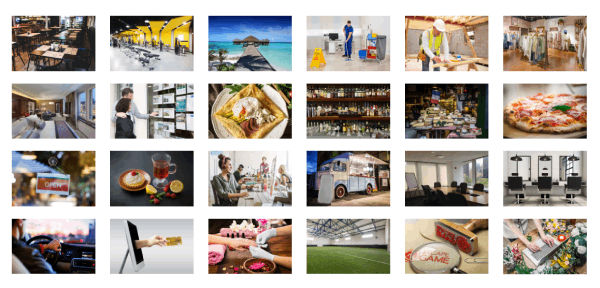
The operating expenses for a furniture flipping company
Once you know what level of sales you can expect, you can start budgeting the expenses required to operate your furniture flipping company on a daily basis.
Expenses normally vary based on how much revenue you anticipate (which is why, from experience, it is always better to start your forecast with the topline projection), and where your business is based.
Operating expenses for a furniture flipping company will include some of the following items:
- Staff costs: This includes the salaries and benefits for employees working in roles such as furniture refurbishing, marketing, and customer service.
- Accountancy fees: You will need to hire an accountant to help you manage your finances, file taxes, and provide financial advice for your furniture flipping business.
- Insurance costs: You will need to purchase insurance to protect your furniture flipping business from potential risks such as accidents, damages, and theft.
- Software licenses: You may need to purchase software licenses for programs that will help you manage your inventory, track sales, and handle customer orders.
- Banking fees: This includes fees for maintaining a business bank account, processing payments, and using other banking services such as wire transfers.
- Marketing expenses: You will need to allocate a budget for marketing your furniture flipping business through avenues such as social media, online ads, and print materials.
- Rent or lease: If you are operating your furniture flipping business in a physical location, you will need to pay rent or lease fees for the space.
- Utilities: You will need to cover the costs of utilities such as electricity, water, and internet for your business premises.
- Supplies: This includes the cost of purchasing materials and supplies needed for furniture refurbishing, packaging, and shipping.
- Transportation expenses: You may need to budget for transportation costs such as gas, vehicle maintenance, and shipping fees for delivering furniture to customers.
- Legal fees: You may need to seek legal advice or services for your furniture flipping business, such as drafting contracts or dealing with any legal issues that may arise.
- Training and development: You may need to invest in training and development programs for yourself and your employees to improve skills and knowledge related to furniture flipping.
- Office supplies: This includes the cost of purchasing office supplies such as paper, printer ink, and other necessary items for running your business.
- Office equipment: You may need to purchase office equipment such as computers, printers, and furniture for your business operations.
- Miscellaneous expenses: This includes any other operating expenses that may arise, such as repairs, maintenance, or unexpected costs.
This list will need to be tailored to the specificities of your furniture flipping company, but should offer a good starting point for your budget.
What investments are needed to start or grow a furniture flipping company?
Once you have an idea of how much sales you could achieve and what it will cost to run your furniture flipping company, it is time to look into the equipment required to launch or expand the activity.
For a furniture flipping company, capital expenditures and initial working capital items could include:
- Inventory: This includes the cost of purchasing furniture pieces to be flipped. It can also include any necessary repairs or updates to the furniture before it can be sold.
- Tools and Equipment: As a furniture flipping company, you will need various tools and equipment to refurbish and repair furniture. This can include sanders, paint sprayers, and other hand tools.
- Storage and Warehouse Space: This could include the cost of renting or purchasing a storage unit or warehouse space to store your inventory and tools.
- Transportation: You may need to transport furniture pieces from the seller's location to your storage or workshop space. This could include the cost of a truck or van, as well as gas and maintenance expenses.
- Workshop Renovations: Depending on the condition of the furniture you purchase, you may need to make updates or renovations to your workshop space to accommodate the refurbishing process. This could include painting, installing new flooring, or purchasing workbenches and storage units.
Again, this list will need to be adjusted according to the specificities of your furniture flipping company.
Need a convincing business plan?
The Business Plan Shop makes it easy to create a financial forecast to assess the potential profitability of your projects, and write a business plan that’ll wow investors.
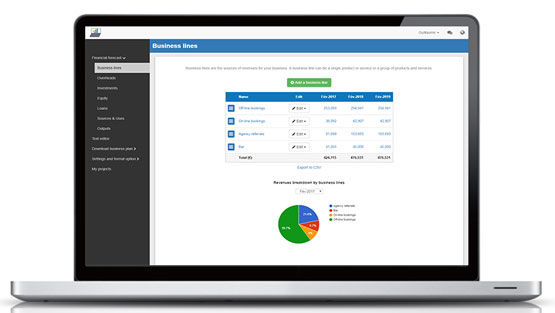
The financing plan of your furniture flipping company
The next step in the creation of your financial forecast for your furniture flipping company is to think about how you might finance your business.
You will have to assess how much capital will come from shareholders (equity) and how much can be secured through banks.
Bank loans will have to be modelled so that you can separate the interest expenses from the repayments of principal, and include all this data in your forecast.
Issuing share capital and obtaining a bank loan are two of the most common ways that entrepreneurs finance their businesses.
What tables compose the financial plan for a furniture flipping company?
Now let's have a look at the main output tables of your furniture flipping company's financial forecast.
The profit & loss forecast
The forecasted profit & loss statement will enable you to visualise your furniture flipping company's expected growth and profitability over the next three to five years.

A financially viable P&L statement for a furniture flipping company should normally show:
- Sales growing above inflation
- Stable or expanding (ideally) profit margins
- A net profit
This will of course depend on the stage of your business: a new venture might be loss-making until it reaches its breakeven point in year 2 or 3, for example.
The projected balance sheet
Your furniture flipping company's projected balance sheet provides a snapshot of your business’s financial position at year-end.
It is composed of three types of elements: assets, liabilities and equity:
- Assets: represent what the business possesses including cash, equipment, and accounts receivable (money owed by clients).
- Liabilities: represent funds advanced to the business by lenders and other creditors. They include accounts payable (money owed to suppliers), taxes payable and loans from banks and financial institutions.
- Equity: is the combination of what has been invested by the business owners and the cumulative profits and losses generated by the business to date (which are called retained earnings). Equity is a proxy for the value of the owner's stake in the business.

The projected cash flow statement
A projected cash flow statement for a furniture flipping company is used to show how much cash the business is generating or consuming.

The cash flow forecast is usually organised by nature to show three key metrics:
- The operating cash flow: do the core business activities generate or consume cash?
- The investing cash flow: how much is the business investing in long-term assets (this is usually compared to the level of fixed assets on the balance sheet to assess whether the business is regularly maintaining and renewing its equipment)?
- The financing cash flow: is the business raising new financing or repaying financiers (debt repayment, dividends)?
Cash is king and keeping an eye on future cash flows is imperative for running a successful business. Therefore, you should pay close attention to your furniture flipping company's cash flow forecast.
If you are trying to secure financing, note that it is customary to provide both yearly and monthly cash flow forecasts in a financial plan - so that the reader can analyze seasonal variation and ensure the furniture flipping company is appropriately capitalised.
Need a solid financial forecast?
The Business Plan Shop does the maths for you. Simply enter your revenues, costs and investments. Click save and our online tool builds a three-way forecast for you instantly.

Which tool should you use to create your furniture flipping company's financial forecast?
Using the right tool or solution will make the creation of your furniture flipping company's financial forecast much easier than it sounds. Let’s explore the main options.
Using online financial forecasting software to build your furniture flipping company's projections
The modern and easiest way is to use an online financial forecasting tool such as the one we offer at The Business Plan Shop.
There are several advantages to using specialised software:
- You can easily create your financial forecast by letting the software take care of the financial calculations for you without errors
- You have access to complete financial forecast templates
- You get a complete financial forecast ready to be sent to your bank or investors
- You can easily track your actual financial performance against your financial forecast, and recalibrate your forecast as the year goes by
- You can create scenarios to stress test your forecast's main assumptions
- You can easily update your forecast as time goes by to maintain visibility on future cash flows
- You have a friendly support team on standby to assist you when you are stuck
- It’s cost-efficient and much cheaper than using an accountant or consultant (see below)
If you are interested in this type of solution, you can try our projection software for free by signing up here.
Calling in a financial consultant or chartered accountant
Outsourcing the creation of your furniture flipping company financial forecast is another possible solution.
This will cost more than using software as you can expect as your price will have to cover the accountant’s time, software cost, and profit margin.
Price can vary greatly based on the complexity of your business. For a small business, from experience, a simple three-year financial forecast (including a balance sheet, income statement, and cash flow statement) will start at around £700 or $1,000.
Bear in mind that this is for forecasts produced at a single point in time, updating or tracking your forecast against actuals will cost extra.
If you decide to outsource your forecasting:
- Make sure the professional has direct experience in your industry and is able to challenge your assumptions constructively.
- Steer away from consultants using sectorial ratios to build their client’s financial forecasts (these projections are worthless for a small business).
Why not use a spreadsheet such as Excel or Google Sheets to build your furniture flipping company's financial forecast?
Creating an accurate and error-free furniture flipping company financial forecast on Excel (or any spreadsheet) is very technical and requires both a strong grasp of accounting principles and solid skills in financial modelling.
Most entrepreneurs lack the expertise required to create an accurate financial forecast using spreadsheet software like Excel or Google Sheets. As a result, it is unlikely anyone will trust your numbers.
The second reason is that it is inefficient. Building forecasts on spreadsheets was the only option in the 1990s and early 2000s, nowadays technology has advanced and software can do it much faster and much more accurately.
This is why professional forecasters all use software. With the rise of AI, software is also becoming smarter at helping us detect mistakes in our forecasts and helping us analyse the numbers to make better decisions.
Finally, like everything with spreadsheets, tracking actuals vs. forecasts and updating your forecast as the year progresses is manual, tedious, error-prone, and time-consuming. Whereas financial forecasting software like The Business Plan Shop is built for this.
Need a convincing business plan?
The Business Plan Shop makes it easy to create a financial forecast to assess the potential profitability of your projects, and write a business plan that’ll wow investors.

Use our financial projection templates for inspiration
The Business Plan Shop has dozens of financial forecast templates available.
Our examples contain a complete business plan with a financial forecast and a written presentation of the company, the team, the strategy, and the medium-term objectives.
Whether you are just starting out or already have your own furniture flipping company, looking at our financial forecast template is a good way to:
- Understand what a complete business plan should look like
- Understand how you should model financial items for your furniture flipping company
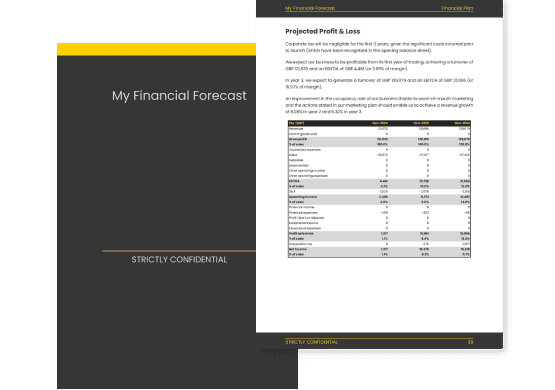
Takeaways
- A financial projection shows expected growth, profitability, and cash generation for your business over the next three to five years.
- Tracking actuals vs. forecast and keeping your financial forecast up-to-date is the only way to maintain visibility on future cash flows.
- Using financial forecasting software makes it easy to create and maintain up-to-date projections for your furniture flipping company.
You have reached the end of our guide. We hope you now have a better understanding of how to create a financial forecast for a furniture flipping company. Don't hesitate to contact our team if you have any questions or want to share your experience building forecasts!
Need inspiration for your business plan?
The Business Plan Shop has dozens of business plan templates that you can use to get a clear idea of what a complete business plan looks like.

Also on The Business Plan Shop
Know someone who runs or wants to start a furniture flipping company? Share our financial projection guide with them!

